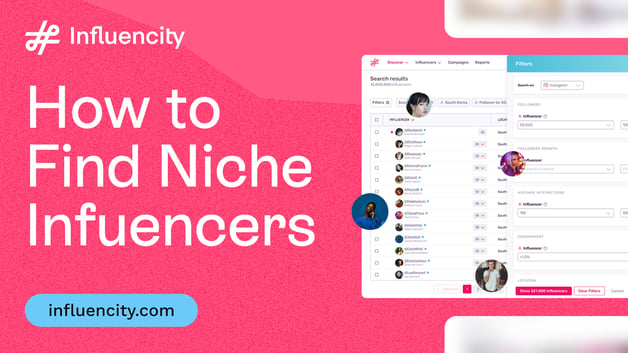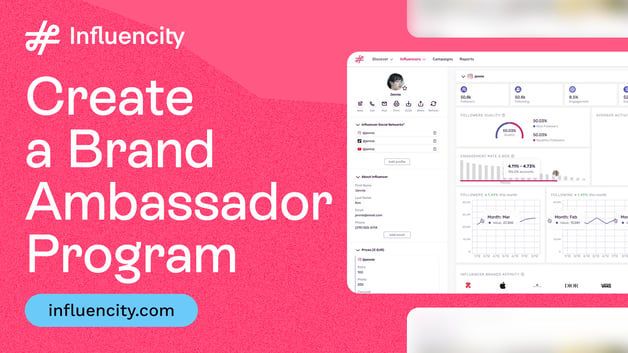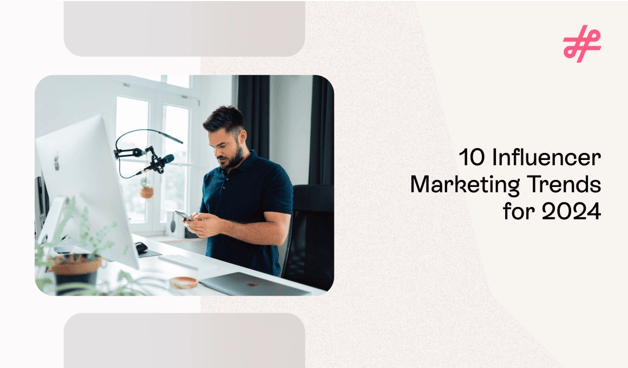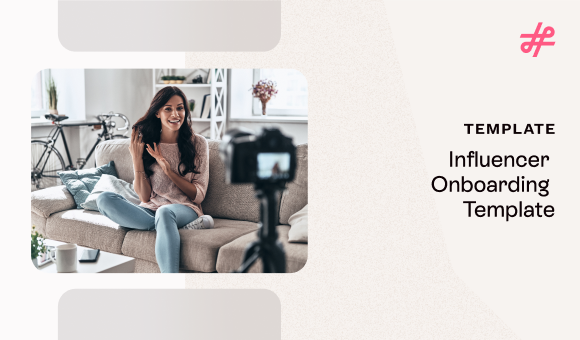Influencer Marketing
Red Flags in Influencer Analytics Every Brand Should Know
Influencer Marketing
Half a million followers. Stunning photos. A perfect brand fit.
You ship the product. You wait. Your sales dashboard stays flat.
Every day, brands get burned by beautiful Instagram profiles. They chase impressive numbers only to discover an uncomfortable truth: looking influential doesn't mean driving results.
Behind those glittery follower counts often lurks a shadow economy of purchased engagement, algorithmic manipulation, and mismatched audiences that never convert to customers.
The most expensive marketing lesson isn't the influencer's fee – it's the opportunity cost of partnering with the wrong creator when the right one could have transformed your bottom line.

The truth? Surface-level influencer stats can be deeply misleading. Effective influencer partnerships demand deeper analytics to reveal which creators genuinely drive results and which merely create the illusion of influence.
This guide cuts through the glitz to expose five critical red flags in influencer analytics that every brand should recognize. From spotting fake engagement to ignoring audience fit, you'll learn how to spot warning signs before committing your budget and how to build campaigns that perform.
Red Flag #1: Fake Engagement & Inflated Follower Counts
If you've ever compared influencer accounts based on analytics, it's enough to make a detective blush. What looks like influence on the surface often hides the ugly truth. Behind the scenes, a surprising number of creators are gaming the system. They’re buying fake followers and faking engagement to increase their paychecks, without driving results for brands.

It kind of looks legit. Search Google for “Buy Instagram Followers.” Or, search Instagram with hashtags like #engagementpod or #commentforcomment and you can join groups of real people who will reciprocate with likes and comments on your posts.
While some creators are intentional in gaming their metrics, others inherit fake followers passively over time.
So how can you tell what’s real?
Start by checking for these red flags:
Suspicious follower growth patterns—Follower growth for real influencers is consistent over time. When followers are purchased, you’ll see spikes in follower growth. Spikes are therefore a potential red flag that may be a sign of purchased followers. Certainly, a viral post or successful campaign or some great publicity could generate a spike and that’s what you need to rule out.

- Superficial engagement—Engagement, the fake kind, can be purchased. It’s often automated and easy to spot as generic comments (“Nice pic” or emojis) that would apply to any post. Engagement pods are another common method to artificially inflate engagement by joining a group of real people who all agree to comment on each other's posts to boost engagement.
- Mismatched metrics - When the metrics don’t make sense, trust your gut. 100,000 followers with only 100 likes per post? Something is wrong! A high engagement rate but also a high likes:comment ratio? Dig a little deeper.
How to Spot Fake Followers and Engagement
Fortunately, as fake influencing gets more sophisticated, so do the tools that can help us uncover the evidence.

For example:
- Influencity’s audience quality score alerts you to suspicious patterns in the credibility of followers
- Influencity’s follower growth graph reveals suspicious growth patterns that may indicate fake followers were purchased
If you're vetting influencers manually, take time to scroll through their posts:
- Do the comments sound human and relevant?
- Is there a consistent pattern of engagement or just a few posts with massive spikes?
- Are real people tagging friends, asking questions, or engaging with the product?
- Is the influencer able to maintain good engagement with sponsored posts?

What to Prioritize Instead of High Follower Counts
Now that we’ve established that vanity metrics are not the best predictor of influence, what are some stronger ways to evaluate influencers?
- Audience authenticity: Is the influencer reaching real people who care? Afterall, it takes real people to buy your product.
Tools like Influencity can help you weed out accounts with low audience quality followers, meaning those with too high a percentage of bot or inactive followers. Here’s my insider tip: All influencers–even those who meticulously grow their accounts by doing all the right things–will have some bot followers. My recommendation is to beware of accounts with greater than 25% “doubtful” followers. - Niche relevance: Does their content align with your industry or product?
- Trust signals: Are they getting thoughtful responses from an engaged community?
In the end, fake engagement, such as from influencer pods, might inflate your vanity metrics. But it won’t build your brand or move your bottom line.
Red Flag #2: Low Engagement Rate Despite High Follower Count
Low engagement for a high follower count is undoubtedly a red flag that warrants deeper investigation. However, context is important.

If the engagement rate is low and the audience doesn’t care, that’s a hard pass. But suppose you notice the influencer’s community is very invested, and the influencer happened to have a viral post that attracted a flood of new followers. In that case, you now understand the low engagement rate is just the natural dilution of the engagement rate from the influx of followers.
Why Engagement Rates Matter More Than Reach
Reach vs. engagement. Reach measures the size of the audience, while engagement measures how many care. How many are moved enough to take action, participate in a conversation, or share content. Reach doesn’t always equal impact, so engagement is considered by many to be the more valuable metric.

Even algorithms on platforms like Instagram and TikTok prioritize engagement. Content with higher engagement rates gets shown to more people, creating a snowball effect that increases organic reach.
Engagement then creates social proof. When potential customers see others enthusiastically discussing your product, it validates their own interest.
That said, reach still matters in specific scenarios:
- Awareness campaigns focused on introducing a new brand or product
- Contests or giveaways where broad participation is the goal
- Message testing across different audience segments
What Does a “Good” Engagement Rate Look Like?
Good engagement rates vary by platform, follower count, and industry. Find engagement rate benchmarks for your industry.
Remember that lower engagement rates are expected as the audience size grows, but low rates relative to your benchmark are a red flag.

How to Evaluate Engagement Authenticity
Look beyond average engagement rate to evaluate engagement quality. Review:
- Comment quality: Are followers tagging their friends, asking questions, or reacting to the content?
- Engagement consistency: Is the rate stable over time, or does it drop off after a few standout posts?
- Sponsored vs. organic engagement: If branded content consistently underperforms, take note.
Use a tool like Influencity to calculate and compare engagement rates across multiple influencers quickly.
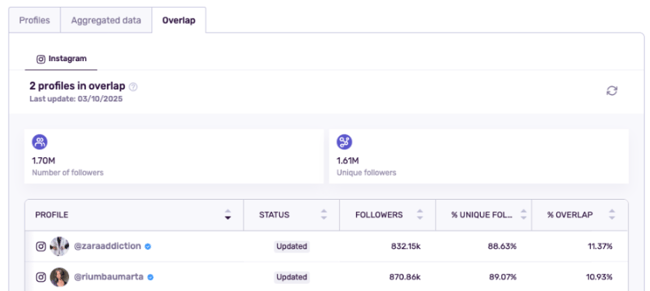
Influencer Analytics: Quality vs. Quantity
When it comes to influencer analytics, quality beats quantity every time. Nano-influencers with their engaged, loyal communities can drive more real-world action than a celebrity account with disengaged fans.
Let’s look at the numbers to show why nano-influencers pack an outsized impact with their big engagement rates.
Nano-influencer Campaign
200 Instagram nano-influencers
5,000 followers each (1,000,000 followers)
3% engagement rate
= 1,000,000 potential reach and 30,000 interactions.
Celebrity Sponsorship
1 Instagram celebrity influencer
1,000,000 followers
1% engagement rate
= 1,000,000 potential reach and 10,000 interactions.
When reach is important, consider working with quantities of nano- or micro-influencers to increase your relevance and results.
Red Flag #3: Mismatched Audience Demographics
You found an influencer whose content is perfectly on-brand—fun, polished, and packed with personality. But when the campaign goes live? Silence.
The problem may not be the creator. It might be their audience.

One of the biggest blind spots in influencer analytics is failing to dig into who the influencer is actually reaching.
An influencer’s followers need to mirror your ideal customer, or no amount of great content will drive conversions.
Why Demographics Matter
Even with authentic engagement, your campaign can flop if you target the wrong people. Let’s say you're selling a high-end skincare product in the U.S., but your influencer’s audience is 70% under age 18 and mostly based in Brazil. That misalignment means:
- Low purchase intent
- Poor product-market fit
- Wasted ad spend on followers unlikely to convert
Knowing who the influencer is is not enough. You need to know who they’re reaching.
What to Analyze
Before committing to a collaboration, evaluate the influencer’s:
- Geographic breakdown: Are followers located where your product ships or sells? If you are responsible for generating results in a defined geography, what percent of their followers are in the right geography?
- Age range: Does their audience fall within your buyer persona’s age bracket?
- Gender split: Is the majority of their audience aligned with your product’s target user?
- Interests and psychographics: Do followers actually care about your category?
Many influencer platforms, like Influencity, provide detailed audience insights to help you evaluate fit beyond the surface.

Real-World Red Flags
- A U.S. apparel brand partners with a beauty influencer, only to find that 60% of her audience is international and can't access the store
- A financial wellness product partners with a lifestyle creator whose audience is primarily teenagers
- A men’s supplement brand collaborates with a fitness influencer whose followers are 80% female
The audience doesn’t align in all these cases, and performance suffers.
How to Avoid Mismatched Demographics

- Ask for audience reports from the influencer or their agency
- Use tools to cross-check demographics with your buyer personas
- Run small tests or story polls before launching a full campaign
When your product and the influencer’s audience are in sync, your message has the best likelihood to land with the right people, boosting conversions and maximizing ROI.
Red Flag #4: Lack of Performance Tracking & UTM Links
You wouldn’t launch a paid ad campaign without tracking clicks and conversions. So why treat influencer marketing any differently?
One of the most common red flags in influencer analytics is a lack of clear performance tracking. Too many campaigns rely on vague metrics like “reach” or “impressions” and miss the opportunity to tie influencer content directly to business outcomes.
Without UTM parameters, influencer-specific codes, or referral links, you’re flying blind.
Why This Matters
If you can’t connect influencer activity to real-world actions—like site visits, sign-ups, or purchases—you can’t measure ROI. And if you can’t measure ROI, how do you know whether the collaboration was worth the investment?
This is especially critical when influencer budgets are rising. Marketers need data, not guesses.
What You Should Be Tracking
In addition to top-of-funnel awareness, every influencer campaign should include measurable KPIs like:
- Click-through rate (CTR) on links
- Redemption of influencer-specific discount codes
- Conversions and revenue from traffic attributed to influencer content
- Customer acquisition cost (CAC) by influencer or campaign
These metrics offer a fuller picture of how influencers contribute to your funnel, not just who saw a post.
Simple Tracking Tools to Use
- UTM links (via Google Campaign URL Builder) to track traffic by influencer, campaign, or platform
- Promo codes tied to specific creators to track redemptions
- Shopify or WooCommerce integrations that allow creator-level tracking
- Influencity and other platforms that combine content analytics with performance attribution
How to Fix It

- Make tracking part of your campaign setup, not an afterthought
- Communicate expectations to influencers. Explain the importance of using trackable links or codes
- Use a dashboard or spreadsheet to monitor mid-campaign and adjust as needed
- Don’t just measure once. Optimize over time using real performance data
In short: If you’re not tracking performance, you’re not learning—and if you’re not learning, you’re not improving.
Red Flag #5: Poor Content Quality & Low Brand Fit
Even if an influencer has real followers and solid engagement, your campaign can still fall flat if their content doesn’t feel right for your brand.
It’s not just about reach or aesthetics. It’s about fit.
When content feels off-brand, inauthentic, or out-of-place, audiences notice. And in influencer marketing, how something is said is just as important as who is saying it.
What Poor Fit Looks Like
- Sponsored posts that feel overly scripted or robotic
- Low production quality that reflects poorly on your product
- A tone or persona that clashes with your brand identity
- Audience reactions like “This doesn’t feel like you” or “Why are you promoting this?”
@mikaylanogueira THESE ARE THE LASHES OF MY DREAMS!! @lorealparisusa never lets me down 😭 #TelescopicLift #LorealParisPartner #LorealParis @zoehonsinger ♬ original sound - Mikayla Nogueira

Influencer content should feel like a natural extension of the creator’s usual style, not a jarring interruption. If followers sense that the post is forced or irrelevant, trust erodes and so does campaign performance.
Brand Fit Drives Authenticity and Results
Authenticity isn’t just a buzzword. It’s what drives consumer action. According to multiple industry reports, shoppers are more likely to buy when a recommendation feels genuine. That only happens when the influencer’s voice, values, and content style align with your brand.
How to Evaluate Content Quality and Brand Fit
Before you commit, dig into:
- The influencer’s past sponsored content: Does it feel natural? Does their audience respond positively?
- The visual style: Does it complement your brand, or would it need a total overhaul?
- The tone and values: Is there synergy between how the influencer speaks and what your brand stands for?
Also consider audience sentiment:
- Are branded posts getting the same level of engagement as organic ones?
- Are followers supportive or skeptical of the partnerships?

Tools like Influencity can help you assess this objectively using sentiment analysis and comment trends.
What to Prioritize Instead
Look for creators who are already aligned with your brand, even better if they’re existing customers or vocal supporters. Run test campaigns, review content drafts, and maintain creative freedom, but within clear brand guidelines.
Because when content feels natural, your message lands better and your audience listens.
How Brands Can Avoid These Pitfalls
By now, it’s clear that the wrong influencer data—or a shallow analysis of the right data—can seriously derail your marketing efforts. But with the right approach, brands can turn influencer analytics into a competitive advantage.
Here’s how to avoid the most common traps and start building smarter, higher-performing influencer campaigns:
1. Use AI-Powered Analytics Tools to Verify Engagement and Audience Quality
Manual vetting is time-consuming and easy to get wrong. Use platforms like Influencity to:
- Flag suspicious audience patterns (bots, engagement pods, fake spikes)
- Evaluate engagement consistency over time
- Analyze audience demographics to ensure alignment with your buyer personas
These tools don’t just save time. They surface insights you might otherwise miss.
2. Set SMART Goals and KPIs Before Launching
Without a clear goal, it’s impossible to measure success. Before kicking off a campaign, define SMART metrics:
- Specific: e.g., "Increase TikTok sign-ups"
- Measurable: e.g., "by 20% in Q2"
- Achievable: within your influencer’s reach
- Relevant: tied to real business outcomes
- Time-bound: within a specific timeframe
Example: “Generate 900 new email sign-ups from Instagram Stories using influencer discount codes by May 31.”
These metrics keep both internal teams and influencers aligned on outcomes—not just aesthetics.
3. Implement Real-Time Tracking for Smarter Optimization
Don’t wait until the campaign ends to evaluate performance. Use UTM links, promo codes, and creator dashboards to track:
- Mid-campaign performance
- Traffic sources
- Conversions per influencer
Set up dashboards (e.g., Google Analytics, Shopify, etc.) that allow real-time visibility and enable agile adjustments if something isn’t working.
4. Prioritize Long-Term Brand Advocacy Over One-Off Deals
Influencer marketing performs best when there’s a relationship, not just a transaction. Long-term partnerships:
- Build trust with followers through repeated exposure
- Enable deeper brand storytelling
- Lead to more authentic, higher-quality content
Instead of jumping from influencer to influencer, consider building a brand ambassador program or cultivating 5 to 10 trusted creators to collaborate with over time.
5. Align Marketing and Data Teams from the Start
One of the biggest campaign killers? Misalignment between creative and analytics teams.
Ensure your influencer, performance, and content teams work together to define:
- What “success” looks like
- Which data to track
- How results will be analyzed and reported
This alignment turns influencer marketing from a “brand play” into a scalable, repeatable growth channel.
Avoiding red flags isn’t just about avoiding risks, it’s about reaching the full potential of your influencer strategy.
Conclusion: Smarter Analytics, Better Campaigns
Influencer marketing can drive incredible results, but only when it’s backed by the right data. Too often, brands fall for surface-level stats and shiny profiles when selecting influencers, only to end up with disappointing ROI and missed goals.

Now you know better.
You’ve learned the five major red flags that can quietly derail your campaigns:
- Fake engagement and inflated followers
- Low engagement despite high reach
- Mismatched audience demographics
- Lack of performance tracking
- Poor content quality and brand misalignment
Each of these can cost you—but they’re also entirely avoidable.
You can move from vanity metrics to value with smarter tools, clearer KPIs, and a commitment to analyzing the right data. From wasted spend to measurable ROI. And from one-off influencer posts to meaningful, long-term partnerships that actually grow your brand.
Next Step:
Ready to take control of your influencer strategy?
Explore how Influencity’s analytics platform can help you spot red flags early, track performance in real time, and build data-backed campaigns that convert.
Because in today’s influencer economy, smart analytics aren’t optional—they’re your edge.
Tags:
Influencer Analytics
Lynne Clement
Lynne Clement knows influencer marketing from every angle, having worked across agencies, brands, and platforms for nearly 20 years. Her insights come from marketing experience at Procter & Gamble, leading marketing strategy and execution at a top influencer agency, and working inside an influencer platform. During...





![TEMPLATE Influencer Marketing Campaign Proposal Template [+Playbook] Create professional, winning pitches to secure your next big campaign.](https://no-cache.hubspot.com/cta/default/3449185/interactive-186850340410.png)



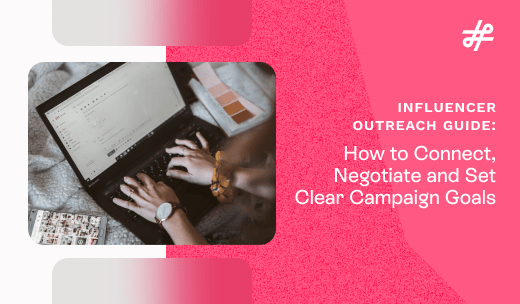









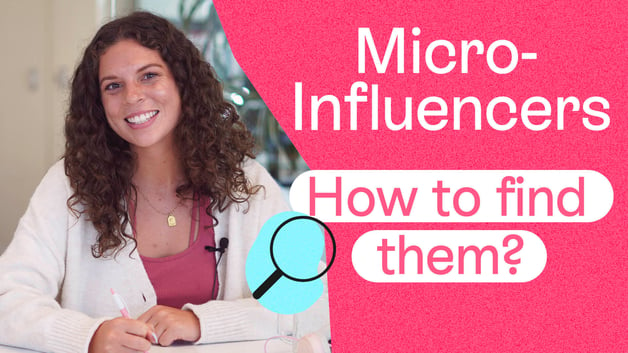


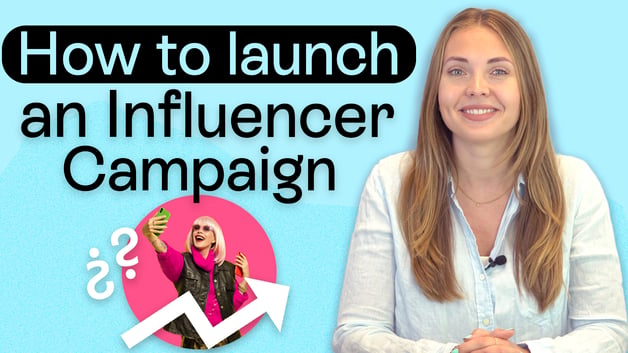

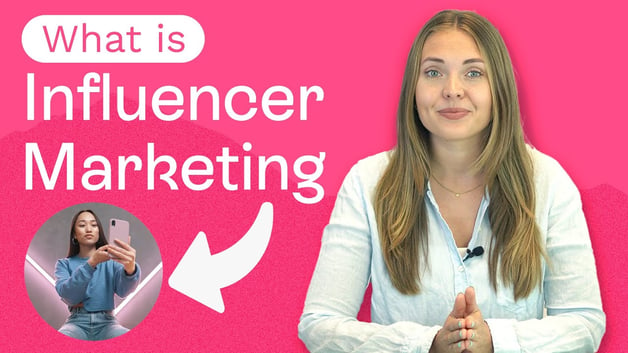

%20and%20How%20Can%20They%20Benefit%20Your%20Brand%20article.jpg?length=628&name=What%20Are%20Key%20Opinion%20Leaders%20(KOL)%20and%20How%20Can%20They%20Benefit%20Your%20Brand%20article.jpg)
